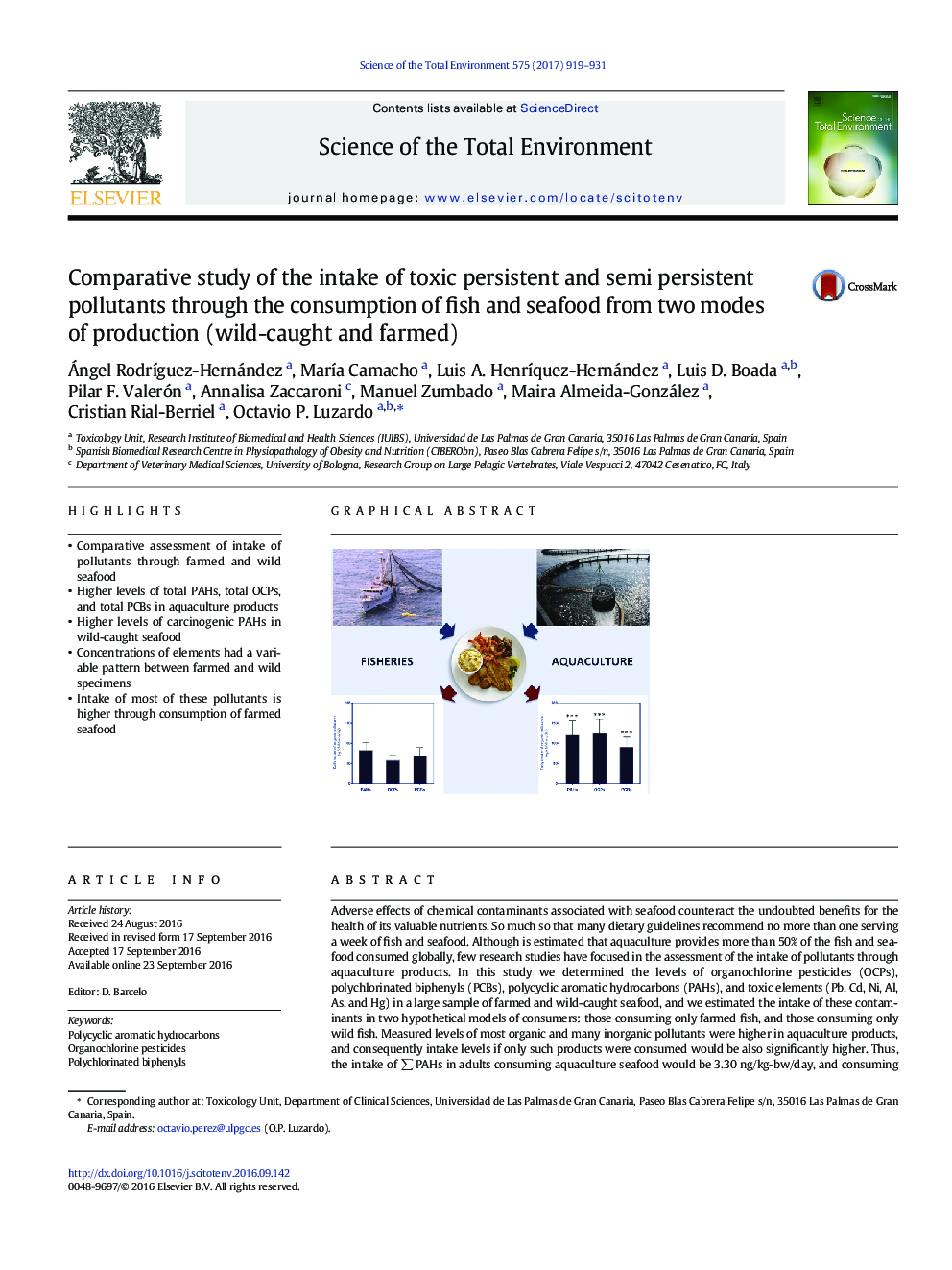| کد مقاله | کد نشریه | سال انتشار | مقاله انگلیسی | نسخه تمام متن |
|---|---|---|---|---|
| 6319641 | 1619716 | 2017 | 13 صفحه PDF | دانلود رایگان |
- Comparative assessment of intake of pollutants through farmed and wild seafood
- Higher levels of total PAHs, total OCPs, and total PCBs in aquaculture products
- Higher levels of carcinogenic PAHs in wild-caught seafood
- Concentrations of elements had a variable pattern between farmed and wild specimens
- Intake of most of these pollutants is higher through consumption of farmed seafood
Adverse effects of chemical contaminants associated with seafood counteract the undoubted benefits for the health of its valuable nutrients. So much so that many dietary guidelines recommend no more than one serving a week of fish and seafood. Although is estimated that aquaculture provides more than 50% of the fish and seafood consumed globally, few research studies have focused in the assessment of the intake of pollutants through aquaculture products. In this study we determined the levels of organochlorine pesticides (OCPs), polychlorinated biphenyls (PCBs), polycyclic aromatic hydrocarbons (PAHs), and toxic elements (Pb, Cd, Ni, Al, As, and Hg) in a large sample of farmed and wild-caught seafood, and we estimated the intake of these contaminants in two hypothetical models of consumers: those consuming only farmed fish, and those consuming only wild fish. Measured levels of most organic and many inorganic pollutants were higher in aquaculture products, and consequently intake levels if only such products were consumed would be also significantly higher. Thus, the intake of â PAHs in adults consuming aquaculture seafood would be 3.30 ng/kg-bw/day, and consuming seafood from extractive fishing 2.41 ng/kg-bw/day (p < 0.05); â OCPs, 3.36 vs. 1.85 ng/kg-bw/day, respectively (p < 0.05); â PCBs, 2.35 vs. 2.11 ng/kg bw/day, respectively; and the intake of Pb, Ni, As, and Al would be also significantly higher consuming farmed seafood. For children the estimations were very similar, but the difference of intake of PCBs reached statistical significance. The implementation of several decontamination practices in aquaculture would allow not only match the levels of pollution from wild-caught seafood, but also could provide products with much lower levels of pollutants than those, which in turn would allow to increase consumption over the “one serving per week”, and so benefit the consumer of the enormous positive health effects of the valuable nutrients of seafood.
231
Journal: Science of The Total Environment - Volume 575, 1 January 2017, Pages 919-931
